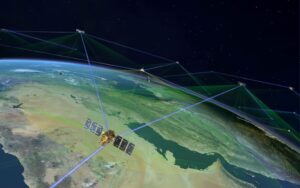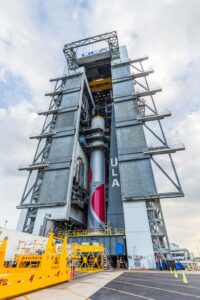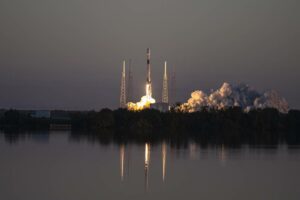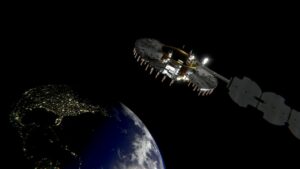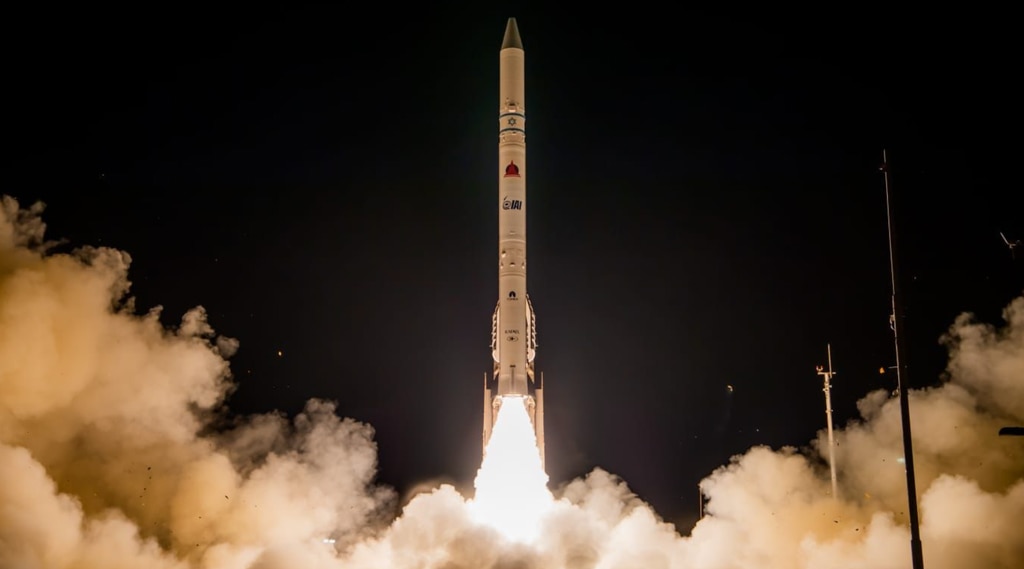
JERUSALEM — Israel has sent its Ofek 13 military intelligence satellite into space from a site in central Israel using the country’s Shavit launcher, the Defense Ministry said this week.
“The successful launch of the satellite is yet another important example of the Israeli defense establishment’s groundbreaking innovation,” said Defense Minister Yoav Gallant, who was present during the launch.
Prime Minister Benjamin Netanyahu recently fired Gallant from his post for challenging a judicial overhaul plan, but it appears Gallant is still in the position. The ministry hasn’t provided an update to his status.
Israel sent the satellite into orbit on March 29, and it has begun transmitting data, the ministry said. Ofek 13 will complete an initial series of inspections before it is declared operational in the “near future,” the ministry added in its statement.
The ministry described the Ofek 13 satellite as a synthetic aperture radar operating in low Earth orbit. This type of system tends to have an orbit period as short as 90 minutes.
The Space and Satellite Administration, which falls under the purview of the ministry’s Directorate of Defense Research and Development, conducted the launch, which was carried out in coordination with the Israel Defense Forces and local company Israel Aerospace Industries.
“The launch was successful, according to plan,” said AvI Berger, who leads the Space and Satellite Administration. “Initial indications from the satellite are also very good. Within the coming weeks, we will complete technical tests and receive the first pictures before delivering the satellite for operational use by the IDF.”
Daniel Gold, head of the R&D directorate, said the satellite is equipped with the “utmost advanced abilities at the peak of global technology” and “constitutes a leap forward in operational and technological abilities for the preservation and improvement of Israel’s standing in space for the coming decades.”
The satellite will be used by Israel’s Unit 9900, a classified branch within the IDF involved in analyzing, interpreting and understanding satellite images and maps. Brig. Gen. Erez Askal, who commands the unit, said the launch positions Israel “as a regional and international space power.
“Our unit’s soldiers and commanders will continue to work around the clock to ensure the satellite’s successful operation and to provide a full operational intelligence picture,” the officer added.
Israeli has launched its Ofek series of satellites since 1988. Israel’s Air Force has previously described the satellites as “a tool that allow us to look beyond the horizon, to see and investigate all of our areas of interest, and best deal with the theaters and threats. … The satellites are a power multiplier and produce a great amount of product for the IAF.”
Ofek 11 was launched in 2016, and Ofek 16 in 2020. The latter carried a Jupiter camera designed by Elbit Systems.
The Defense Ministry has not explained the numerical logic behind naming the satellite that came after 11 as 16, and then returning to 13 this year.
IAI was the prime contractor for the development of the satellite, the launcher and the ground station monitoring system. The launch engines were developed by Rafael Advanced Defense Systems and Tomer, a government-owned company.
The head of IAI, Boaz Levy, praised the Ofek 13′s “groundbreaking intelligence capabilities” and “unique radar observation capabilities” that enable intelligence gathering in any weather and visibility conditions. Israeli statements on the launch did not elaborate on the satellite’s capabilities.
“We will continue to prove that even the sky isn’t the limit for the Israeli defense establishment and that we continue to enhance its capabilities in every dimension in the face of various challenges,” Gallant said at the latest launch.
Seth J. Frantzman is the Israel correspondent for Defense News. He has covered conflict in the Mideast since 2010 for different publications. He has experience covering the international coalition against the Islamic State group in Iraq and Syria, and he is a co-founder and executive director of the Middle East Center for Reporting and Analysis.
- SEO Powered Content & PR Distribution. Get Amplified Today.
- Platoblockchain. Web3 Metaverse Intelligence. Knowledge Amplified. Access Here.
- Source: https://www.defensenews.com/space/2023/03/30/israel-launches-ofek-13-intel-satellite-for-secretive-military-unit/
- :is
- 10
- 11
- 2016
- 2020
- 70
- a
- abilities
- According
- added
- administration
- advanced
- Aerospace
- After
- against
- AIR
- Air Force
- All
- amount
- analysis
- analyzing
- and
- Another
- ARE
- areas
- around
- AS
- At
- BE
- before
- behind
- Benjamin
- Berger
- BEST
- Beyond
- Branch
- by
- camera
- capabilities
- Center
- central
- challenges
- challenging
- classified
- Clock
- Co-founder
- coming
- coming weeks
- company
- complete
- conditions
- conducted
- conflict
- continue
- Contractor
- coordination
- country’s
- covered
- covering
- data
- deal
- decades
- Defense
- delivering
- described
- designed
- developed
- Development
- DID
- different
- Dimension
- Director
- during
- Early
- earth
- East
- Elaborate
- Elbit Systems
- enable
- Engines
- ensure
- equipped
- establishment
- Even
- Every
- example
- executive
- Executive Director
- experience
- explained
- Face
- Falls
- First
- For
- Force
- Forces
- Forward
- from
- full
- future
- gathering
- Gen
- Global
- Gold
- good
- great
- Ground
- groundbreaking
- Group
- Have
- head
- horizon
- HOURS
- HTTPS
- IDF
- image
- images
- important
- improvement
- in
- indications
- industries
- initial
- Innovation
- Intel
- Intelligence
- interest
- International
- investigate
- involved
- iraq
- Islamic
- Islamic State
- Israel
- Israeli
- IT
- ITS
- Jupiter
- latest
- launch
- launched
- launches
- Leads
- Leap
- LIMIT
- local
- Look
- Low
- Maps
- March
- Middle
- Middle East
- Military
- ministry
- minutes
- monitoring
- morning
- naming
- news
- of
- Officer
- on
- operating
- operation
- operational
- Orbit
- Overhaul
- Peak
- period
- picture
- Pictures
- plan
- plato
- Plato Data Intelligence
- PlatoData
- position
- positions
- Post
- power
- Praised
- present
- previously
- Prime
- produce
- Product
- Prove
- provide
- provided
- publications
- R&D
- radar
- Rafael
- receive
- regional
- Reporting
- research
- research and development
- returning
- Said
- satellite
- satellites
- Series
- Short
- since
- site
- Space
- State
- Statement
- statements
- station
- Status
- Still
- successful
- synthetic
- Syria
- system
- Systems
- Technical
- technological
- tests
- that
- The
- this week
- this year
- threats
- to
- tool
- under
- unit
- Update
- us
- use
- various
- visibility
- Weather
- week
- Weeks
- which
- WHO
- will
- with
- within
- Work
- year
- zephyrnet

